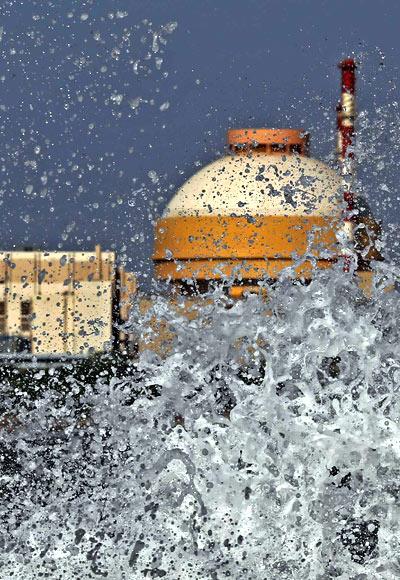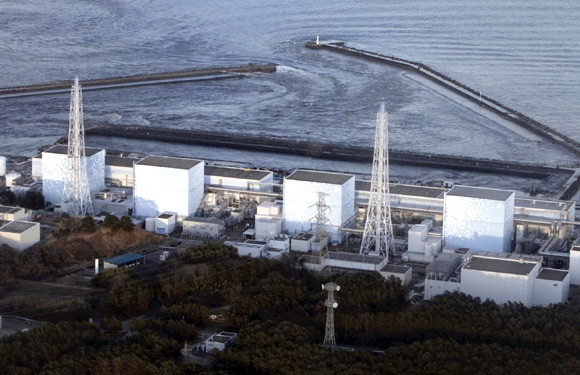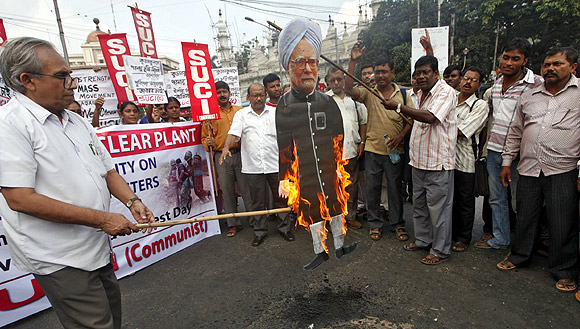
Regardless of the wisdom contained in the Supreme Court judgment, we need to go beyond it, commission the plant after making sure, through an international inspection, that it is safe, create a fool-proof disaster management system and make a pledge that India will progressively move towards elimination of nuclear power within a time frame, says T P Sreenivasan
No one could fault the Supreme Court for its judgment on the diverse issues concerning the Kudankulam nuclear power plant. It was realistic, comprehensive and well balanced.
But neither the protesters of Kudankulam, nor the nuclear skeptics around the world would find anything in it for comfort. The crisis in our energy scenario, sparked off by the global anxiety about safety will continue to persist beyond the judgment. Stressing the indispensability of nuclear power for our development and highlighting the need to strike a balance between safety and development will only induce more apprehensions. While the court order has laid out the fundamentals, we have to go beyond it to device a way of operating the plant with adequate safety guarantees for the residents in and around Kudankulam.
Dismissing a petition challenging the Madras high court's earlier order in favour of the plant, the Supreme Court termed the operationalisation of Kudankulam nuclear power plant as necessary for the country's growth. The court stressed that development of nuclear energy is important for India and said, "While setting up a project of this nature, we have to have an overall view of larger public interest rather than smaller violation of right to life guaranteed under Article 21 of the Constitution."
The court dismissed the risk element by stating that we have to balance economic and scientific benefits with that of minor radiological detriments on the touchstone of our national nuclear policy.
"Public money running into crores and crores of rupees has already been spent for the development, control and use of atomic energy for the welfare of the people and, hence, we have to put up with such minor inconveniences, minor radiological detriments and minor environmental detriments," the court said.
Click on NEXT for more...

Turning to the need for safety, the court said that the regulatory authorities are obliged to perform their duty to ensure that safety measures are adequately taken before the plant commences its operation. "Safety, security and life would constitute a pyramid within the sanctity of Article 21 and no jettisoning is permissible."
The delicate balance in other spheres may have some allowance, but in the case of establishment of a nuclear plant, the safety measures would not tolerate any lapse. The grammar is to be totally different. The court also said that problems highlighted were not unique to India and that other countries were also grappling with the situations. But it glossed over the measures taken by other countries to reduce dependence on nuclear power after the unfortunate accident at Fukushima in Japan.
The court adopted a conciliatory attitude to the protesters by asking the local authorities to consider withdrawing the hundreds of cases clamped on the protesters, who were accused even of colluding with foreign countries to sabotage the plant. Accusations were made at the highest level that foreign funding was freely available to the agitators.
The suggestion that the United States might be behind the agitation did not seem justified as the US had a greater stake in India's nuclear future than any other country. By withdrawing the cases against them, the court expected that the concerned people would heave a sigh of relief and quit the scene.
Click on NEXT for more...

The judgment has not altered the situation on the ground. There was indeed no legal bar against commissioning the reactor. Even the protesters were in no position to block the commissioning of the plant. What prevented the prime minister from keeping his promise to Russian President Vladimir Putin were technical glitches related to the completion of the plant. No details of the problem came out till the Russian company, which supplied parts of the reactor was hauled up in Moscow for supplying sub-standard components to plants throughout the world.
The authorities in Kudankulam were forced to open up several segments of the plant to inspect them for quality and precision. Some defective components like valves were discovered and they had to be replaced. The Supreme Court judgment was not relevant to those who are struggling day and night to meet the deadline for commissioning the plant. Even today, there is no guarantee that the plant would be commissioned on a specified date.
The protesters have announced that the judgment has made no difference to their plight either. They had not sought a court order to prevent the plant from being commissioned. They were more concerned that the several elaborate measures concerning safety steps, which were prescribed by the courts, had not been taken. The reports about the installation of defective components only fuelled their angst. The repeated assurances that all is well with the reactor did not seem to pacify the people.
They are still not fully aware of the disaster management plans and details of the emergency measures that would be available in the event of an accident. They see no hospitals coming up in the vicinity or earmarking areas for evacuees in an emergency. Their determination has only hardened after the Supreme Court judgment because they know now that they have no recourse to law on the basis of right to life. The court wants to give them better quality of life with the blessings of nuclear power rather than freedom from fear. As for withdrawal of cases, it does not seem to matter to them whether they live in the prisons or outside. They are pledged to continue their peaceful protests, regardless of the outcome.
Click on NEXT for more...

Kudankulam will be commissioned once the technical hitches are removed. Assurances of safety will be repeated at different levels and the reactor may well function normally as the other 20 reactors in our country have done for several years. There may be no serious earthquake or tsunami in the area and India may maintain its impeccable safety record. The power starved Tamil Nadu and Kerala will find some reprieve and those in the cities will have better quality of life.
But the question of safety raised after Fukushima will remain a concern when country after country abandons nuclear power, while we continue with business as usual approach, banking on failing memories and claims that the damage at Fukushima was not as catastrophic as it was projected.
It is imperative at this point of time that the trust deficit be tackled in some way or the other. Despite the many assurances given by the government that the Atomic Energy Regulatory Board would be an independent body, it still remains subservient to the Atomic Energy Commission. In the face of lack of credibility of local authorities and even reputed scientists, it would be useful to get the International Atomic Energy Agency to carry out a safety inspection of the plant. The IAEA would be only too happy to mount such an inspection. India has been fighting shy of IAEA safety inspections, but a recent inspection by an Operational Safety Review Team of the Rajasthan Atomic Power Station was reassuring.
The ultimate solution, till a technological breakthrough eliminates radiation dangers, is to alter our energy mix to reduce and discard nuclear energy for generation of power. For the small component of nuclear power that we envisage in our energy mix, we should find viable alternatives, which are already available.
Click on NEXT for more...

Even a declaration by the government that we will strive for zero nuclear power in the long term will give some comfort to the people, who worry constantly about future generations.
Regardless of the wisdom contained in the Supreme Court judgment, we need to go beyond it, commission the plant after making sure, through an international inspection, that it is safe, create a fool-proof disaster management system and make a pledge that India will progressively move towards elimination of nuclear power within a time frame.
These measures may send the protesters home in the hope that the future residents of Kudankulam may be saved from nuclear danger.
T P Sreenivasan is a former ambassador of India to the United Nations, Vienna, and a former Governor for India at the International Atomic Energy Agency, Vienna. He is currently the Director General, Kerala International Centre, Thiruvananthapuram, and a Member of the National Security Advisory Board. For more articles by Ambassador Sreenivasan, please click here.
...